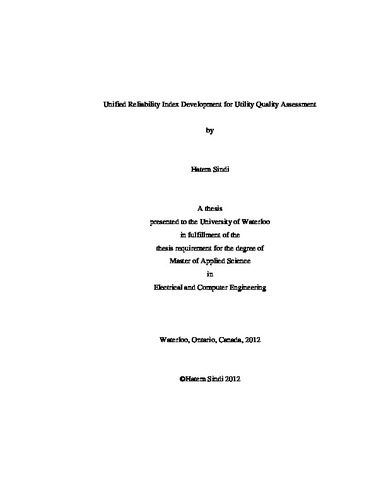| dc.description.abstract | With the great potential smart distribution systems have to cause a paradigm shift in conventional distribution systems, many areas need investigation. Throughout the past few decades, many distribution systems reliability indices have been developed. Varying in their calculation techniques, burden, and purpose of calculation, these indices covered wide range of reliability issues that face both utilities and regulators. The major purpose of the continuous development of reliability indices is to capture a comprehensive idea of systems performance. While systems are evolving to a much more smarter and robust ones, so do the assessment tools need to be improved. The lack of consensus among utilities and regulators on which indices should be used complicate the problem more. Furthermore, regulators still come short when it comes to standard implementation because no final standard have been developed. However, regulators tend to advice or impose certain numbers on utilities based on historic performances. Because of the inevitable comparisons made by regulators on the routinely practiced process of utilities’ reporting of some of their indices, adequate and fair process needs to be implemented. The variation in utilities perspective on the advice or imposed indices cause an additional burden to achieving fair and adequate designs, upgrade requirements, and public goodwill. Some utilities consider these regulators recommendations guidelines; others treat them as strict standards, and yet others consider them goals. In this work, a development of a unified reliability index, which can yield proper performance assessment, fair comparisons, and reflection of all the knowledge imbedded within all current indices, will be developed. The developed unified index provides several benefits, among which is adequate standards design, improved tools for planning and design optimization, and less technical burden on operators. In addition, the development of a unified reliability index required the development of a standard normalization methodology. | en |

